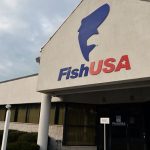As part of a year-long campaign to raise funds for Yellowstone cutthroat trout habitat restoration on Teton Creek in southern Idaho, Teton River's (FTR) Teton Creek Restoration Project is being featured on a full page in the Orvis spring and summer fishing catalogs and prominently on the Orvis website.
In March and April, Orvis patrons can contribute to the project via a “Round Up for Conservation” campaign, featured on the Orvis website at www.orvis.com. Internet shoppers can choose to “round up” their Orvis purchase price to the next dollar, with the difference going directly to the Teton Creek Restoration Project.
“We're excited that a locally important spawning tributary for our native Yellowstone cutthroat trout is receiving national exposure and is a priority for a company as recognized as Orvis,” stated FTR Development Director, Anna Lindstedt. She also noted that numerous stressors have contributed to the diminishing populations of Yellowstone cutthroat trout (YCT) in the region, including habitat degradation, nonnative competition, hybridization, and tributary dewatering.
Historically, YCT flourished in Teton Creek, using the mountain tributary to spawn. However, more than a mile of the creek has been completely altered from its natural state, with little viable habitat, no holding water and no spawning grounds. Over the past 40 years, Teton Creek has been highly degraded by in-stream dredging and illegal channelization by developers. Since the destabilization, a “domino effect” has ensued, with bank loss and erosion occurring in up and downstream directions. Landowners are losing over a foot of bank to the creek each year. This unstable creek section threatens the viability of one of the last remaining fluvial populations of YCT in the Teton Basin.
Funds raised through Orvis will be added to the $320,000 dollars FTR has already raised in grant money and private landowner donations toward stream channel and habitat restoration on Teton Creek. While restoration estimates for completion of the most critical mile-long section are expected to approach 1.2 million dollars, FTR Restoration Director Mike Lien pointed out that “the funding momentum for an enormous restoration effort is underway. People realize that healthy riparian areas and trout streams are an asset for our economy and our community.”













